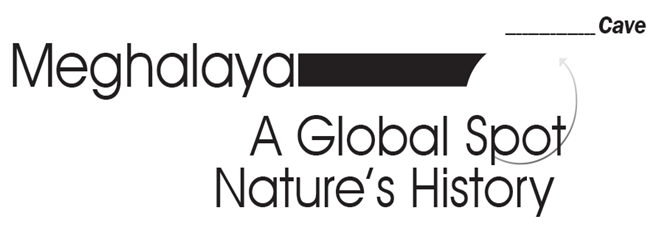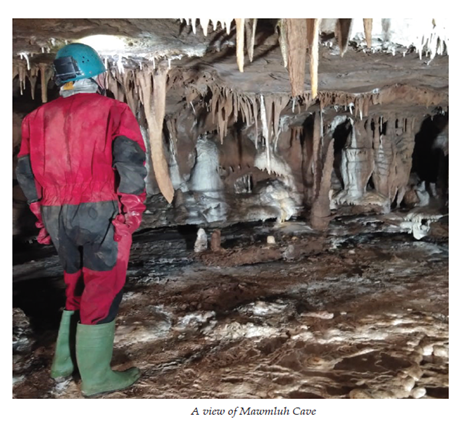
Meghalaya, the home of the Hynniewtrep and Achik races in the back waters of the North eastern region of India is known all over the world, where Sohra receives the heaviest rainfall, appropriate to the state’s name, as the ‘land of clouds’.
Nature has endowed, the vast stretch of the land with about 2,000 caves and more to be discovered, mostly of limestone formation, as the state and surroundings wee once beneath the sea of the Bay of Bengal of the Indian Ocean.
It was in such expedition of caves drawn from all over the world, that a discovery was made in the Mawmluh (stone-salt) cave in Mawsmai, in the Sohra region of the Stalagmite, which stood as evidence of the Holocane age of the world, covering a period of 4,200 years.
 The International Commission of Stratigraphy, the authority of standardizing of Geological Sciences has named this geological age, as the MEGHALAYAN AGE. This age is unique, because it coincides, just not with a global event, but also widespread upheaval among human communities, around the Mediterranean Sea, the Middle East and Asia and also the collapse of civilizations and human migration in Egypt, Greece, Syria, Palestine, Mesopotamia, the Indus Valley, the Yangtze River Valley. This period of the mega-draught lasted for 200 years.
The International Commission of Stratigraphy, the authority of standardizing of Geological Sciences has named this geological age, as the MEGHALAYAN AGE. This age is unique, because it coincides, just not with a global event, but also widespread upheaval among human communities, around the Mediterranean Sea, the Middle East and Asia and also the collapse of civilizations and human migration in Egypt, Greece, Syria, Palestine, Mesopotamia, the Indus Valley, the Yangtze River Valley. This period of the mega-draught lasted for 200 years.
The General Secretary of the Meghalaya Adventures’ Association Age has been named, albeit after much heated debate and discussion, for a Stalagmite taken from the Krem Mawmluh cave in Sohra, which is used as the geological standard that marked the exact start of the age. It may be mentioned that the naming of the Meghalayan-Age is a credit that the world has given to the Stalagmite pillar, discovered in the Mawmluh cave of Sohra, which is used as the geological standard that marked the exact start of the age. The Stalagmite was deposited gradually from layers of mineral, over thousands of years, as rainwater dripped through the roof of the cave. In effect, what it means is, history of the past climate is actually recorded in the Stalagmite, through isotropic analysis. The Stalagmite is presently preserved in the International Geological Standard Centre in the United States of America.
In fact the entire history of the age of the earth is divided into eons, eras, periods, epochs and ages. The very small increment of time is divided into years, months, minutes and seconds.
The current epoch is known as the Holocene epoch which is divided into certain ages and periods. The Greenlandian, that is the early Holocene age, which began when a sudden warming 11,700 years ago ended the last ice-age and the pleistocene Epoh. The Northgrippian, is the Middle Holocene Age, which started 8,300 years ago. Then comes the Meghalayan-late Holocene Age, which runs from the start of a “Mega-draught”, 4,200 years ago, to the present day.
Sumar Sing Sawian
To read the further articles please get your copy of Eastern Panorama April issue @http://www.magzter.com/IN/Hill-Publications/Eastern-Panorama/News/ or mail to contact @easternpanorama.in


